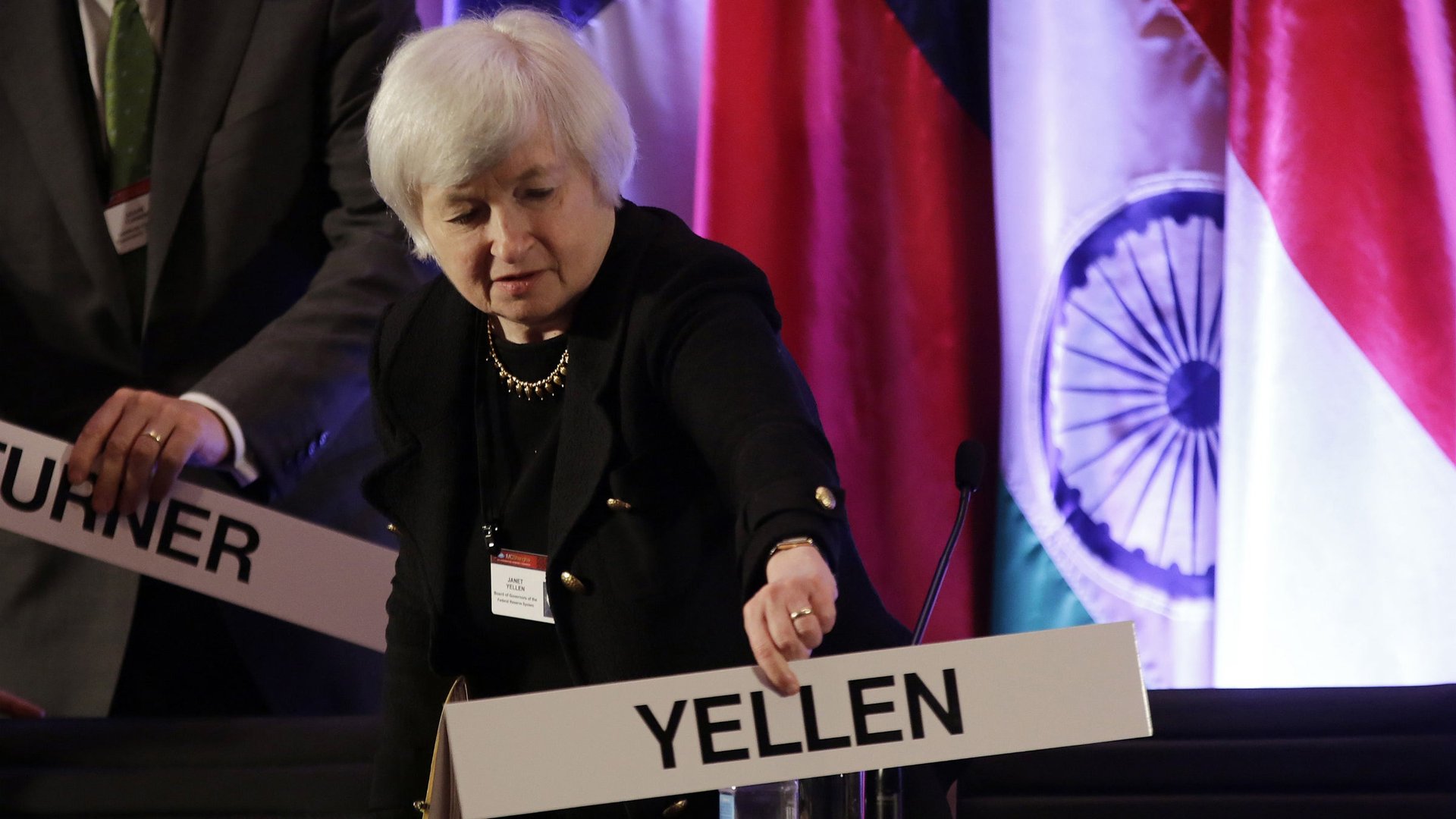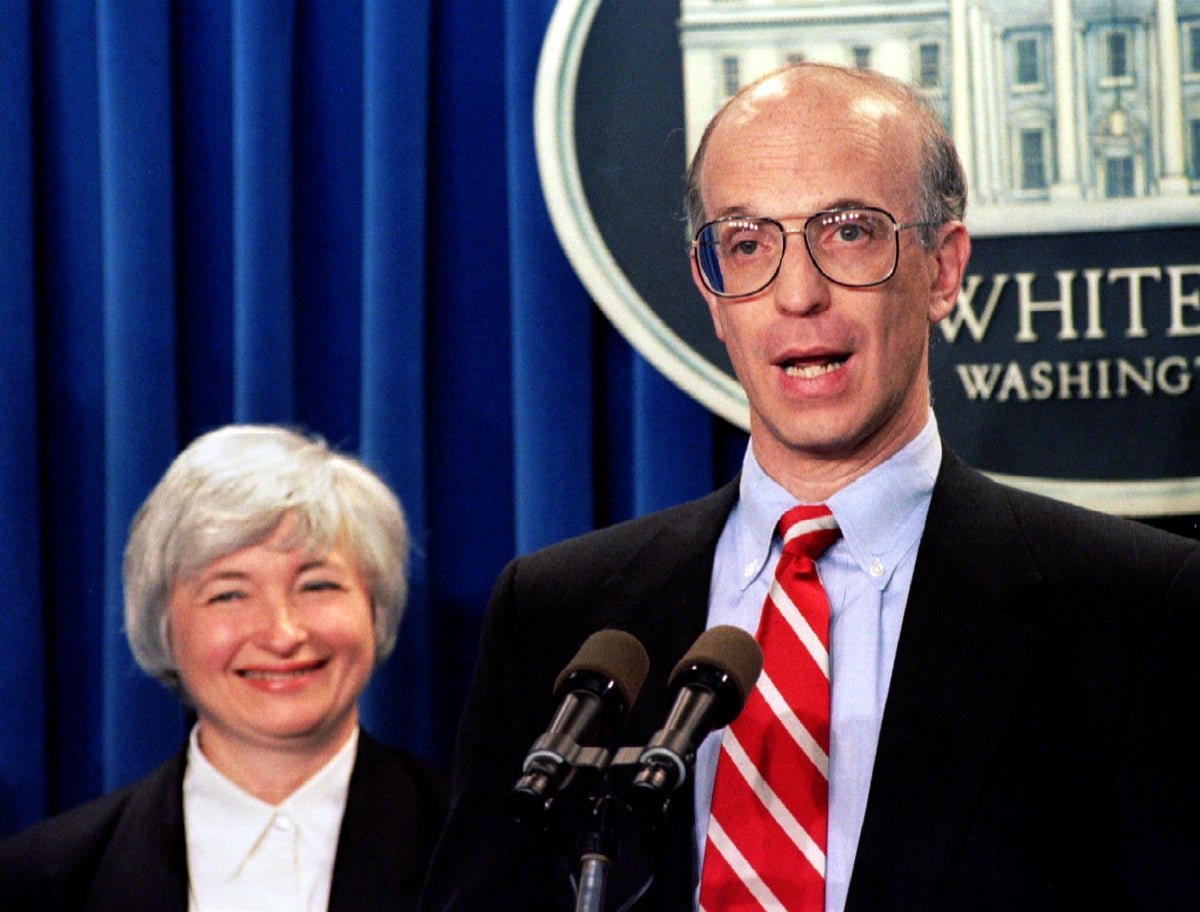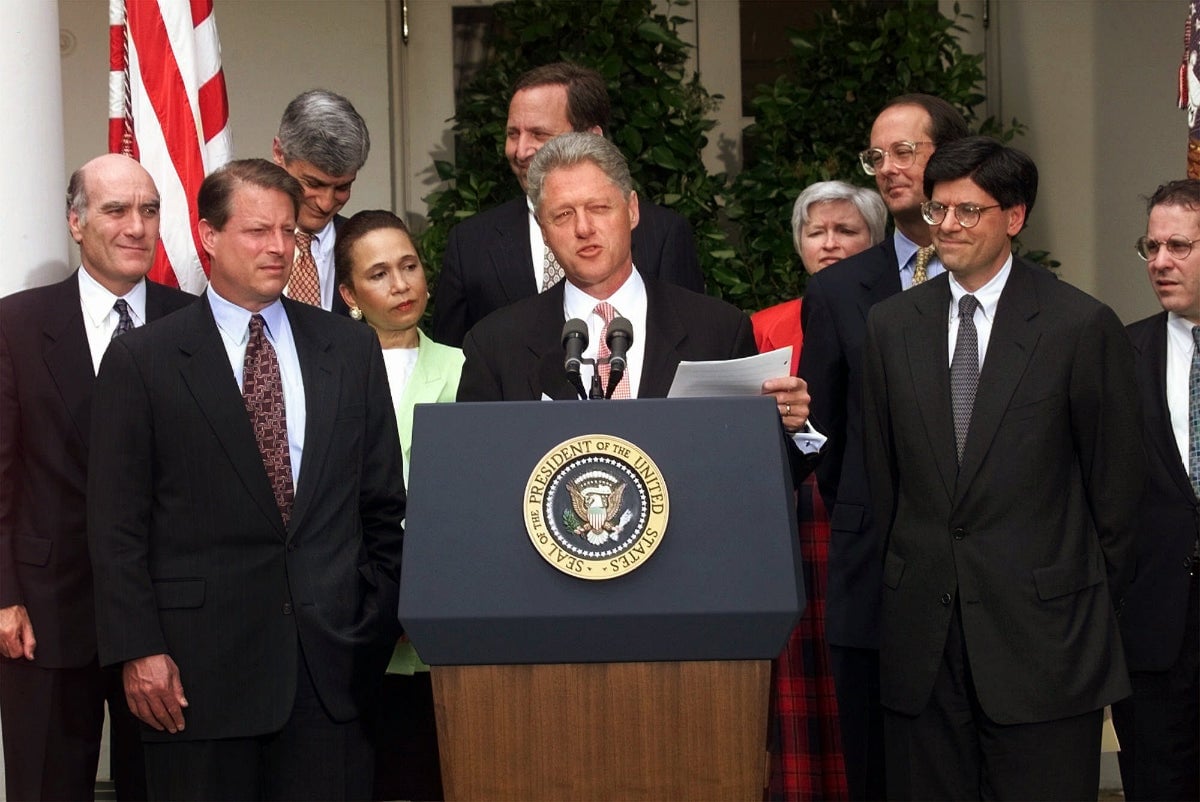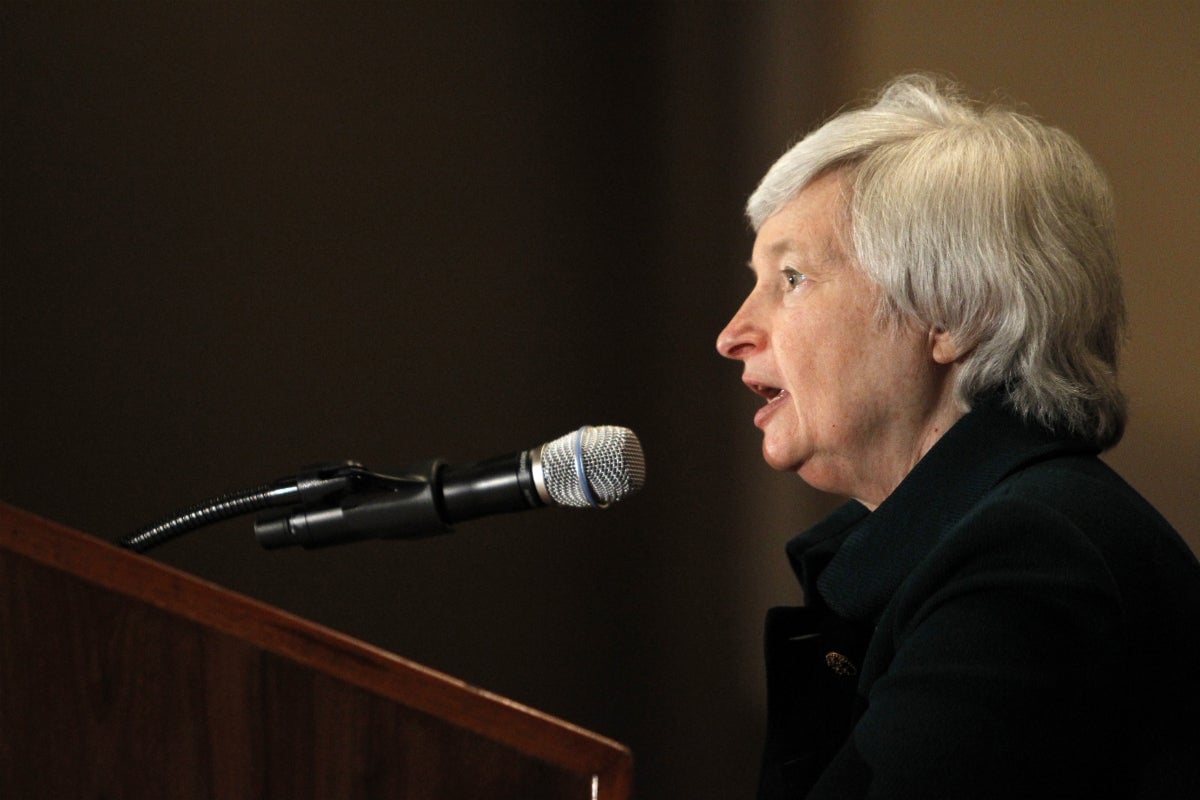Janet Yellen, the “small lady with a large IQ,” could become the world’s most powerful woman
For Wall Street’s ranks of Federal Reserve watchers, Janet Yellen is the clear front-runner to take over the reins from Ben Bernanke, if the current US central bank chief steps down when his term ends in January 2014. Economists surveyed by Bloomberg in late June gave her 65% odds of landing the top job. Treasury secretary Jack Lew is reportedly putting together the list of contenders (paywall.)


For Wall Street’s ranks of Federal Reserve watchers, Janet Yellen is the clear front-runner to take over the reins from Ben Bernanke, if the current US central bank chief steps down when his term ends in January 2014. Economists surveyed by Bloomberg in late June gave her 65% odds of landing the top job. Treasury secretary Jack Lew is reportedly putting together the list of contenders (paywall.)
As vice-chairman of the Fed’s board of governors the 66-year-old, Brooklyn-born Yellen is already incredibly influential and has had a long career as both an academic and Fed head. A key selling point in Yellen’s bid for the most-important job in economics is continuity. She’s marched lockstep with Ben Bernanke as the Fed has taken unprecedented pains to try to support economic growth in the aftermath of the financial crisis. And her influence has been seen in recent efforts by the Fed to introduce more clarity to policy-making. The Fed now targets both inflation and a 6.5% level for unemployment. Oh, and it also holds post-monetary decision press conferences.
President Obama’s penchant for making historic appointments seem to be one of the reasons so many expect Yellen to get the nod. (Obama appointed Attorney General Eric Holder—the first African-American in the position—and Justice Sonya Sotomayor—the first Latina—to the Supreme Court.) Yellen would be the first woman to lead the Fed.
Here are a few important things to know about her.
- She got her PhD in economics from Yale in 1971.
- She taught at the University of California, Berkeley’s Haas School of Business between 1980 and 2006.
- She’s done wide-ranging academic work that touched on topics as divergent as gang behavior, currency problems associated with the reunification of Germany and unemployment and wages.
- She fell for her husband, Nobel laureate economist George Akerlof, over economic debates at a Fed cafeteria. (paywall.)

- She moved to Washington in 1994 to serve as a Fed governor, which she did until 1997.
- She served as chair of the President’s Council of Economic Advisors from 1997 to 1999, though the influence of the Council over policy making in the Clinton White House was thought to be weak.
- She joined with other Democratic-leaning economists in 2003 to criticize the Bush tax cuts, calling them “economically reckless.”
- She’s quite petite. One colleague described her to the New York Times as “a small lady with a large IQ.”
- She wrote a book with Princeton professor and former Fed governor Alan Blinder called The Fabulous Decade: Macroeconomic Lessons from the 1990s. It argued, among other things, that a strong dollar and subdued oil costs played an important role keeping inflation in check throughout that go-go decade for US growth.
- She became head of the Federal Reserve Bank of San Francisco in 2004 until 2010. The San Francisco Fed oversees the largest district in the Federal Reserve system.

- She was one of the first top Fed officials to recognize how serious the financial crisis could be. This is clear from some of the recently released transcripts of the Federal Reserve’s proceedings back in 2007, when the first rumblings of the financial crisis were felt. At that time, a relatively newly minted Fed chairman Bernanke is on record saying he thinks housing would hold up more or less fine and said he didn’t expect insolvency at any major financial institution. Yellen was much more concerned. In September of 2007, she correctly identified the core of the problem, the “severe illiquidity” the securitization markets that would nearly bring the financial system down about a year later. And she warned of the “utter devastation” facing the mortgage market. In retrospect, she looks very prescient.
- She’s been the vice chairman of the Fed since 2010. The vice chairman is one of the most powerful positions at the Fed. The person who holds it acts as a top advisor to the chairman and as a liaison to help coordinate policy between the Federal Reserve Board in Washington and the Fed’s network of regional banks.
- She’s a dove. That means she tends to be much more concerned about high unemployment than the threat of inflation.
- She famously pushed back against then-Fed chairman Alan Greenspan who was leaning toward trying to drive inflation down to zero in 1996 (paywall). You can read the whole transcript of the debate here. But Greenspan calls Yellen’s comments on the topic “an argument that is very well put together.”
- She can be surprising. In 2004, she defended then-White House Chief Economist Greg Mankiw, who had set off a political firestorm by saying outsourcing jobs can help the US economy. ”Basically I agree with Greg’s thrust,” Yellen told the Wall Street Journal at the time. “In the long run, outsourcing is another form of trade that benefits the US economy by giving us cheaper ways to do things.” She added, however, that many moderately paid workers had been hurt by the dynamic.

- She’s a big proponent of Fed transparency, and argues that it helps make Fed policymaking more efficient (paywall.) On this point she’s been incredibly influential in recent years, as the Bernanke Fed has taken unprecedented steps toward being clear about where policy is going. It began publishing Federal Open Market Committee economic forecasts. It introduced a public press conference after some monetary decisions. And it started targeting specific economic outcomes, such as stating it wouldn’t tighten policy until unemployment fell to at least 6.5%.
- She’s a woman of the people. The New York Times reports (paywall) “when Ms. Yellen arrived in 1994, she started to eat lunch regularly in the staff cafeteria to subvert the hierarchical system that limited communication between Fed governors and the vast army of research economists.” Bernanke is also someone who likes to eat amongst the Fed’s foot soldiers. That might say a lot about how Yellen would operate as head of the Fed, opting for a far more collegial style—similar to Bernanke—than the cutting, aloof Alan Greenspan, who ran the Fed as much more of a one-man show.